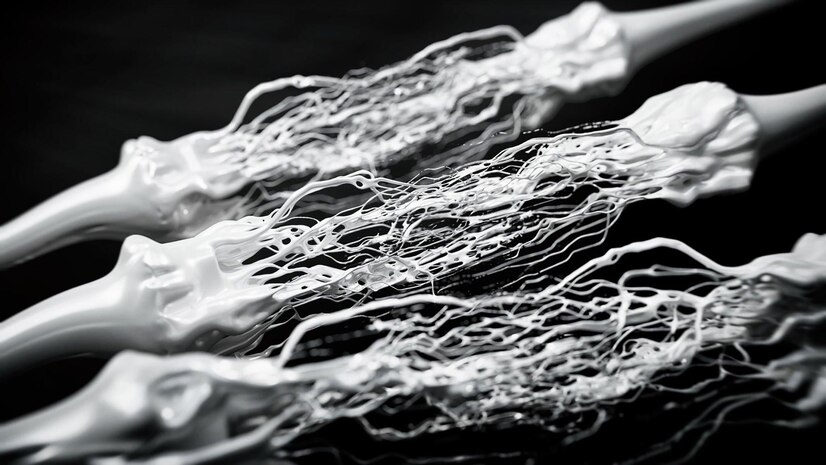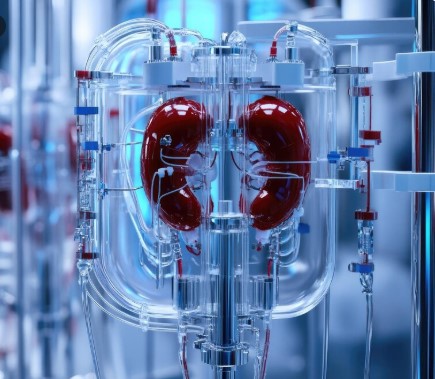Transforming Medicine: The Impact of New Skeletal Tissue Advances

A global team of researchers has found a novel form of skeletal tissue that has enormous promise to advance tissue engineering and regenerative medicine.
Did you know? You can comment on this post! Just scroll down
A global research team headed by the University of California, Irvine has found a novel form of skeletal tissue that has enormous promise to advance tissue engineering and regenerative medicine.
Mammal "lipocartilage," which is found in the ears, nose, and throat, is special because it is packed with fat-filled cells called "lipochondrocytes" that provide super-stable internal support, allowing the tissue to remain soft and springy—similar to bubbled packaging material. Most cartilage depends on an external extracellular matrix for strength.
The work explains how lipocartilage cells form and preserve their own lipid reservoirs while maintaining a consistent size. It was published online today in the journal Science. Lipochondrocytes, in contrast to regular adipocyte fat cells, do not contract or enlarge in reaction to the availability of food.
The work explains how lipocartilage cells form and preserve their own lipid reservoirs while maintaining a consistent size. It was published online today in the journal Science. Lipochondrocytes, in contrast to regular adipocyte fat cells, do not contract or enlarge in reaction to the availability of food.
According to corresponding author Maksim Plikus, a professor of developmental and cell biology at UC Irvine, "the resilience and stability of lipidocartilage provide a compliant, elastic quality that's perfect for flexible body parts like earlobes or the tip of the nose, opening exciting possibilities in regenerative medicine and tissue engineering, particularly for facial defects or injuries." At the moment, cartilage regeneration frequently necessitates the intrusive and unpleasant process of removing tissue from the patient's ribs. It may eventually be possible to create patient-specific lipochondrocytes from stem cells, purify them, and use them to create living cartilage that is suited to each patient's need. These modified tissues might be precisely sculpted with the use of 3D printing, providing novel treatments for trauma, birth abnormalities, and a variety of cartilage disorders.
When Dr. Franz Leydig discovered fat droplets in the cartilage of rat ears in 1854, he made the first discovery of lipochondrocytes. This discovery has since been mostly forgotten. Researchers from UC Irvine thoroughly described the molecular biology, metabolism, and structural function of lipocartilage in skeletal tissues using cutting-edge imaging techniques and contemporary biochemical tools.
They also discovered the genetic mechanism that essentially locks down the lipid stores in lipochondrocytes by inhibiting the action of enzymes that break down lipids and lowering the absorption of new fat molecules. The lipocartilage becomes brittle and stiff when its lipids are removed, underscoring the role that its fat-filled cells play in preserving the tissue's ability to be both flexible and durable. Furthermore, the study observed that lipochondrocytes in certain species, like bats, form complex structures, such as parallel ridges in their large ears, which may improve hearing acuity by modifying sound waves.
"The discovery of the unique lipid biology of lipocartilage challenges long-standing assumptions in biomechanics and opens doors to countless research opportunities," said Raul Ramos, a postdoctoral researcher in the Plikus laboratory for developmental and regenerative biology and the lead author of the study. "Future directions include learning more about the molecular programs that control the structure and function of lipochondrocytes, how they maintain their stability throughout time, and the mechanisms underlying cellular aging. Our results highlight the adaptability of lipids beyond metabolism and offer fresh approaches to using their characteristics in tissue engineering and therapeutics.
In addition to employees from the Santa Ana Zoo and the Serrano Animal & Bird Hospital in Lake Forest, the team comprised academics and medical specialists from the United States, Australia, Belarus, Denmark, Germany, Japan, South Korea, and Singapore.
This work was supported in part by the W.M. Keck Foundation under grant WMKF-5634988; UCI Beall Applied Innovation under Proof of Product grant IR-PR57179; LEO Foundation grants LF-AW-RAM-19-400008 and LF-OC-20-000611; Chan Zuckerberg Initiative grant AN-0000000062; Horizon Europe grant 101137006; National Institutes of Health grants U01-AR073159, R01- AR079470, R01-AR079150, R21-AR078939, P30-AR075047, R01-AR078389-01, R01-DE015038, R01-AR071457, R01-AR067821, R01GM152494, R01DE030565, TL1-TR001415, R01-DE013828, R01- DE30565, R01-HD073182, R01-AR067797, R01-DE017914 and MBRS-IMSD training grant GM055246; National Science Foundation grants DMS1951144, IOS-2421118, DMS1763272, CBET2134916, NSF-GRFP DGE-1321846 and MCB 2028424. The Danish Cancer Society, the Yoshida Scholarship Foundation, the Howard A. Scheiderman Fellowship Award, the UC Riverside School of Medicine Dean's Postdoc to Faculty Program, the Ben F. Love Chair in Cancer Research at Baylor College of Medicine, and Simons Foundation grant 594598 provided additional support.
Article Posted 5 Months ago. You can post your own articles and it will be published for free.
No Registration is required! But we review before publishing! Click here to get started
One Favour Please! Subscribe To Our YouTube Channel!
468k
Cook Amazing Nigerian Dishes, Follow Adorable Kitchen YouTube Channel!
1.1m
Like us on Facebook, Follow on Twitter
React and Comment
Click Here To Hide More Posts Like This
Watch and Download Free Mobile Movies, Read entertainment news and reports, Download music and Upload your own For FREE.
Submit Your Content to be published for you FREE! We thrive on user-submitted content!
But we moderate!

















